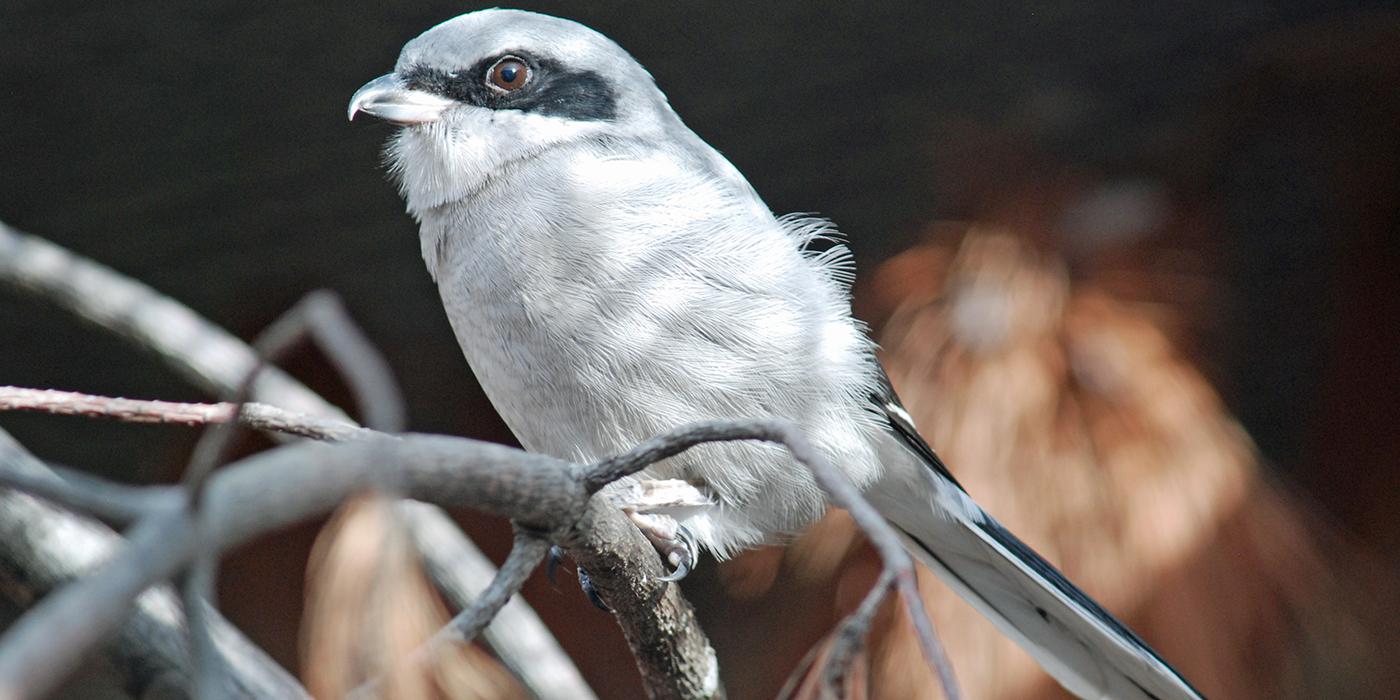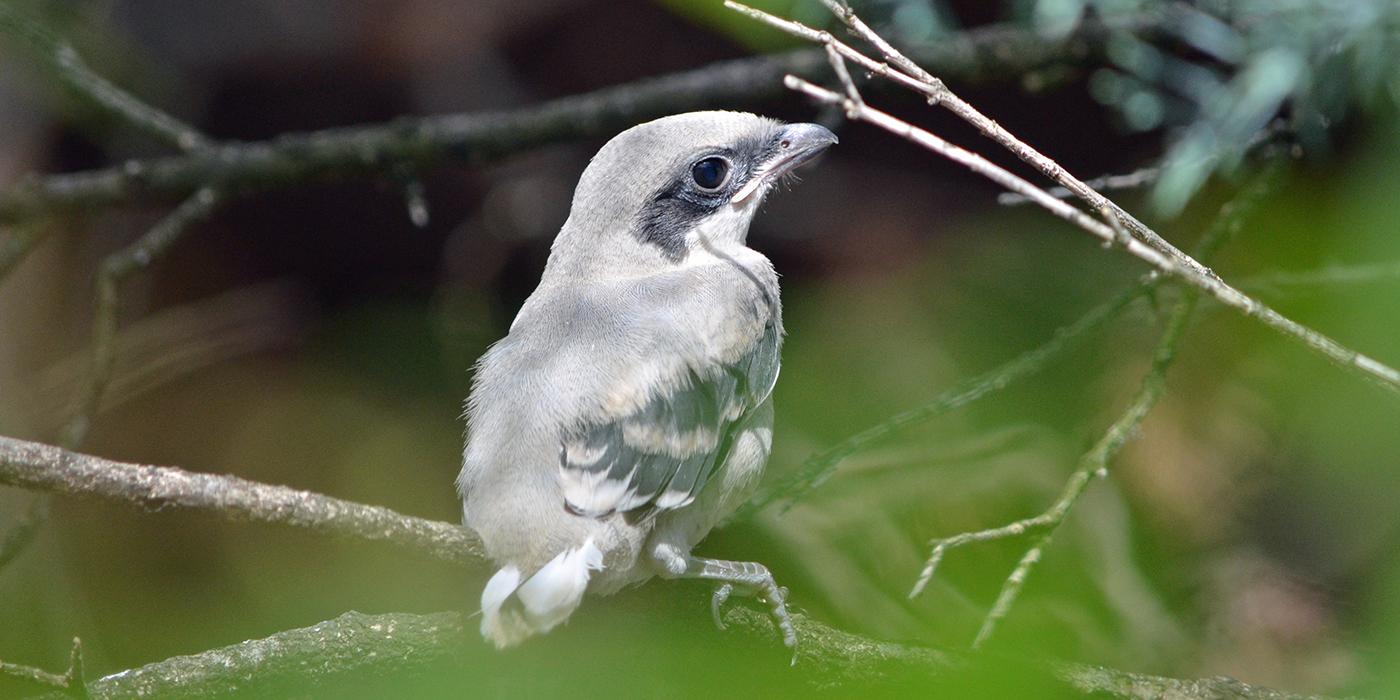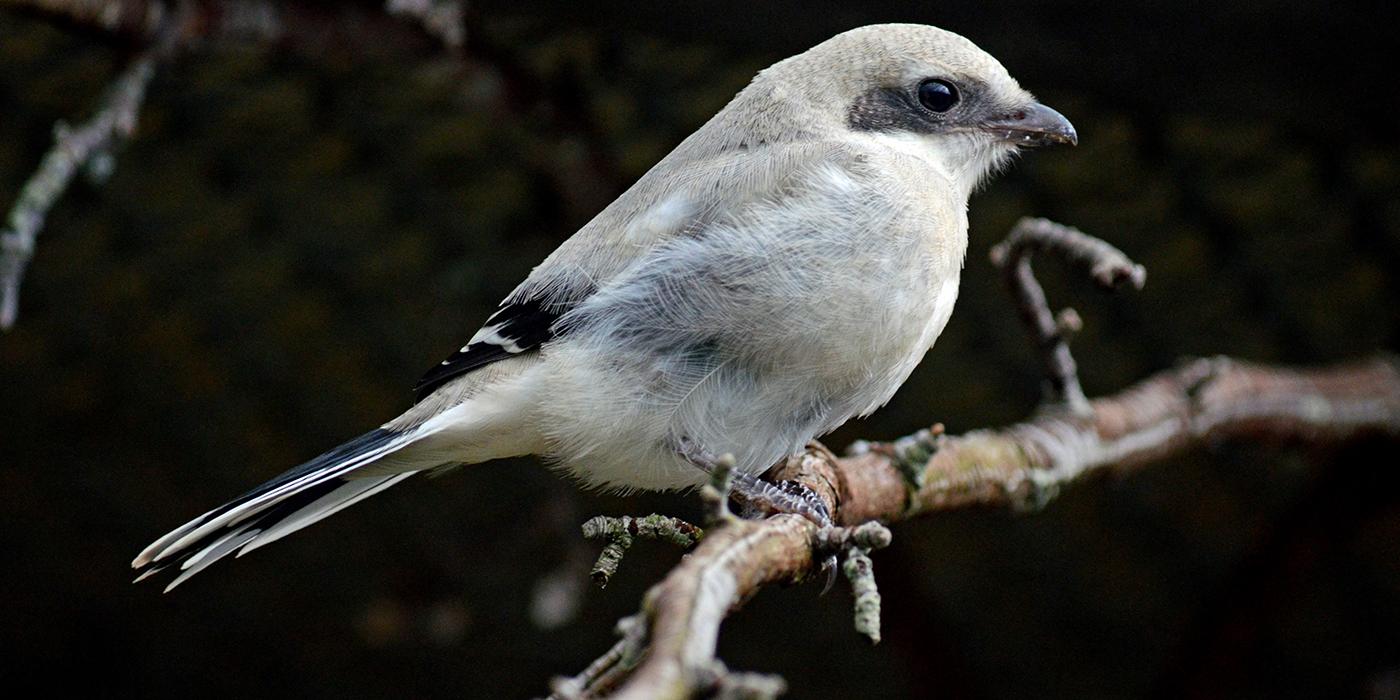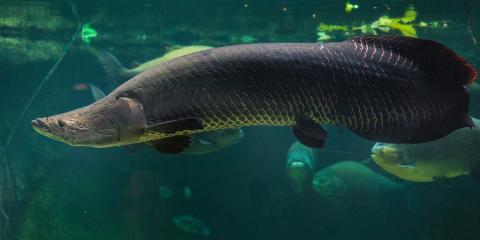Physical Description
Size
Native Habitat
Loggerhead shrikes inhabit open country with short vegetation and well-spaced shrubs or low trees, particularly those with spines or thorns. They frequent agricultural fields, pastures, old orchards, riparian areas, desert scrublands, savannas, prairies, golf courses and cemeteries. Loggerhead shrikes are often seen along mowed roadsides with access to fence lines and utility poles. Suitable nest trees and perches from which to locate prey are essential components of this species' breeding habitat.
Lifespan
There have been no studies of survivorship, and it is estimated that the average lifespan of loggerhead shrikes in the wild is between 7 and 8 years. However, the longest-living loggerhead shrike recorded was a male from California that lived for almost 11 years and 9 months. It was released in 2010 by ornithologists.
Communication
Food/Eating Habits
Loggerhead shrikes eat invertebrates during warmer months. Their staple foods during breeding season include agricultural pests, such as grasshoppers, beetles and rodents. Winter brings a greater reliance on vertebrate prey, such as frogs, turtles, small reptiles, ground squirrels, voles, mice, shrews and small songbirds, to name just a few. In human care, loggerhead shrikes are fed crickets and mealworms. They are provided with thorns and barbed wire on which to skewer their prey.
Reproduction and Development
Loggerhead shrikes nest in a variety of trees and shrubs but seem to prefer those with thorns or dense branches, probably to provide protection and concealment from predators. Both sexes help find the nest site, inspecting many locations before choosing a suitable spot. When trees or shrubs are lacking, loggerhead shrikes will also nest in brush piles. The average height of nests above the ground ranges from about 2.5 to 4 feet (.76 to 1.2 meters). In courtship, the male performs short flight displays to attract the female. Both sexes help build the nest, which is a solidly constructed but bulky cup of twigs, grass, weeds and strips of bark lined with softer materials, such as rootlets, animal hair and feathers. An average clutch of 4 to 6 eggs is laid between mid-April and late June. The female is primarily responsible for incubation, which usually lasts 13 to 16 days. During the incubation period, the male supplies the female with food and aggressively defends the nesting territory. Both adults feed the nestlings. An average of three young fledge after 17 to 20 days, and they remain dependent on the adults for food during the first two to four weeks after fledging. After this initial period, the fledglings are self-sufficient.
Conservation Efforts
Loggerhead shrikes are still numerous in some areas of North America (particularly the south and west), but their populations have fallen sharply over the past half-century. The Loggerhead is listed as threatened or endangered in 14 states and endangered in Canada. Populations have experienced long-term declines throughout most of the eastern and mid-western United States. There are thought to be less than 100 loggerhead shrikes left in Virginia. The last known breeding pair at the Smithsonian Conservation Biology Institute nested in the crane yards in 1992.
Reasons for the decline of loggerhead shrikes are poorly understood. Although a specific cause or causes have not been determined, it has been hypothesized that changes in habitat loss due to land-use and farming practices could be factors. The transition from small farm fields with brushy vegetation and trees along fencerows—which provided nesting sites and hunting perches—to larger intensive farms with fewer fencerows and scattered trees could contribute to population declines.
In addition, the replacement of native, warm-season grasses with cool-season species may be partially to blame. The species’ decline coincides with the introduction and increased use of chemical pesticides between the 1940s and 1970s, and may result in part from the birds' ingestion of pesticide-laced prey from treated fields.
Other likely causes of population decline include collision with vehicles, urban development, conversion of hayfields and pastureland, decimation of hedgerows, habitat destruction by surface-coal strip-mining and altering of prey populations by livestock grazing. However, in Virginia, many territories that were historically occupied by breeding pairs are no longer used, despite habitat conditions that appear unchanged. Given this bird’s potentially high reproductive rate, and provided that adequate habitat continues to be available, loggerhead shrike populations may be able to recover if the causes of their decline can be identified and eliminated.
Loggerhead Shrikes at the Smithsonian Conservation Biology Institute
This species of shrike has been known to breed at the Smithsonian Conservation Biology Institute site, but none have been seen on the grounds since 1992. With the development of Virginia Working Landscapes and a strong interest from the community in restoring grasslands for native biodiversity, the shrike program will serve as an opportunity to contribute to understanding grassland bird population declines and to play a role in conserving a threatened species locally.
SCBI is strongly positioned to contribute to cross-disciplinary studies and conservation of the loggerhead shrike, integrating its expertise in the disciplines of husbandry science, ecology, reproduction, veterinary medicine, behavior and genetics. Scientists have partnered with a Canadian breeding program with the goal of reintroduction. They plan to use geographic information systems (GIS) on the reintroduced population to look at habitat preference and hopefully gain a better understanding of their decline. The knowledge gained would enable SCBI to offer scientifically based conservation action plans to state agencies and concerned individuals and will have broader implications to other declining grassland bird species.
Help this Species
- Reduce, reuse and recycle — in that order! Cut back on single-use goods, and find creative ways to reuse products at the end of their life cycle. Choose recycling over trash when possible.
- Consider going meat-free one day each week to help reduce the demand on the livestock industry and decrease your carbon footprint!
- Are you a student? Did you love what you learned about this animal? Make it the topic of your next school project, or start a conservation club at your school. You'll learn even more and share the importance of saving species with classmates and teachers, too.
- Protect local waterways by using fewer pesticides when caring for your garden or lawn. Using fertilizers sparingly, keeping storm drains free of litter and picking up after your pet can also improve watershed health.





